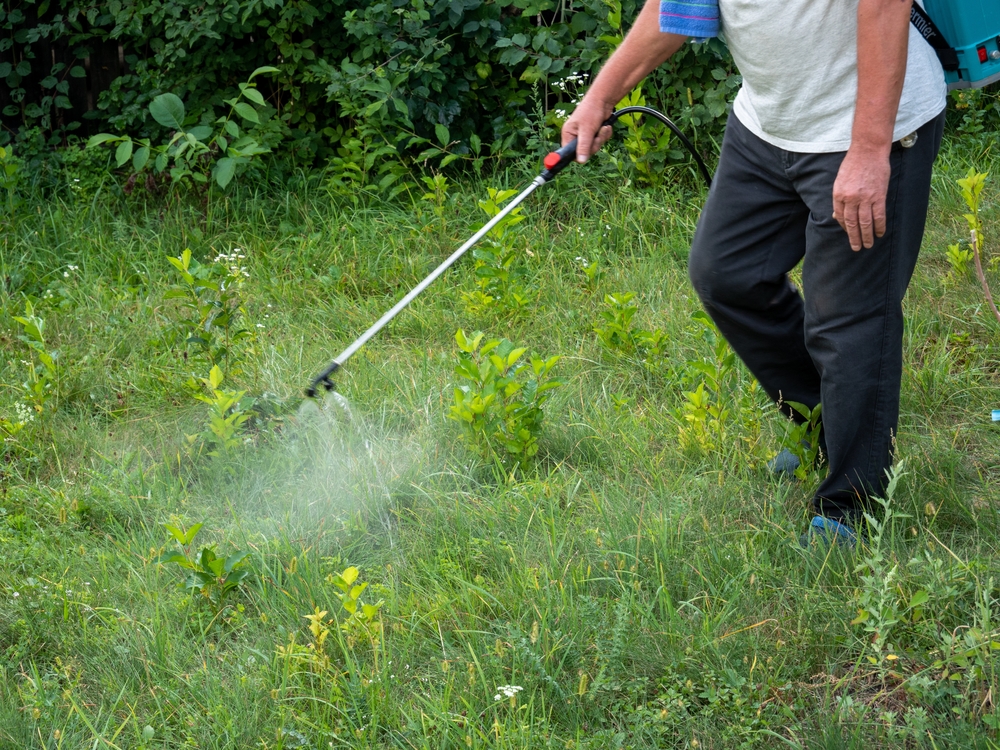Your cart is currently empty!
100% Of California Wines Tested Found To Contain Glyphosate

Recent findings have revealed an unsettling truth about California wines: glyphosate, a chemical classified as a probable carcinogen by the World Health Organization, was detected in every sample tested. This revelation comes from Moms Across America, which commissioned Microbe Inotech Lab to analyze ten different wines, including organic varieties. Shockingly, all were found to contain traces of this harmful herbicide.
This discovery has sent ripples through the wine industry and health-conscious consumers alike. What’s even more concerning is that organic wines—typically seen as a safer choice—were not spared. This highlights the pervasive reach of glyphosate contamination, raising serious concerns about agricultural practices and the safety of even the most trusted labels.

The Scope of the Problem
The results of the California wine tests are alarming. All ten wines, spanning both conventional and organic brands, contained glyphosate, a substance the World Health Organization has labeled a “probable carcinogen.” Organic vineyards, despite their commitment to chemical-free farming, have fallen victim to contamination. This contamination is largely attributed to overspray or airborne drift from neighboring farms that use glyphosate-based products like Roundup.
Adding to the severity of the issue, glyphosate can linger in the soil for more than two decades. This means that even vineyards that have never directly applied the chemical could have their crops unknowingly exposed for years. The impact isn’t just environmental—it’s a direct threat to organic certification and consumer trust. As a result, growers are facing a seemingly insurmountable challenge in safeguarding their products from contamination.
These findings not only shake consumer confidence but also raise serious questions about agricultural practices and regulation. If glyphosate can travel and persist for decades, how can farmers truly adhere to organic standards? Without stricter controls and monitoring, the lines between organic and conventional farming will continue to blur, leaving consumers with fewer trustworthy choices.
Broader Implications
Glyphosate’s persistence in the environment has far-reaching consequences. Once introduced into the soil, it remains active for decades, potentially impacting ecosystems and nearby farms for generations. This not only compromises organic farming efforts but also poses a dilemma for sustainable agriculture as a whole. Farmers who diligently avoid synthetic chemicals are left vulnerable to the practices of neighboring farms that use glyphosate, making it nearly impossible to ensure the purity of their crops.
This widespread contamination serves as a sobering reminder that modern farming practices often prioritize convenience over long-term safety. As the line between organic and non-organic products becomes increasingly blurred, consumers are left questioning whether truly pesticide-free food is achievable in today’s agricultural landscape.
Beyond farms, this issue extends to the surrounding environment. Glyphosate runoff from fields contaminates water supplies, harming aquatic life and further endangering biodiversity. The chemical’s ability to infiltrate ecosystems makes it a global concern, affecting not just agriculture but also the health of entire communities.

Scientific Evidence of Harm
The dangers of glyphosate extend far beyond the fields where it’s sprayed. Scientific studies have shown that glyphosate disrupts hormone production, particularly estrogen receptors, and may promote the growth of breast cancer cells. Alarmingly, counties in California with heavy vineyard pesticide use—Sonoma, Napa, and Mendocino—report breast cancer rates 10–20% higher than the national average.
Further research highlights the risks of direct exposure. A study involving farmers and their families found that glyphosate lingered in their systems for up to three days after application, even when protective measures like gloves were used. These findings are compounded by the toxicity of Roundup’s so-called “inert” ingredients, which have been found to cause cell damage and even death at residual levels.
Moreover, glyphosate has been linked to a host of other health conditions, from respiratory issues to reproductive challenges. As studies continue to uncover its long-term effects, it becomes increasingly clear that glyphosate’s presence in the food chain poses a significant risk to public health, warranting immediate attention and stronger regulations.
Toxicity Beyond Glyphosate
While glyphosate is often the focus of concern, its harmful effects are amplified by the additional chemicals present in products like Roundup. These “inert” ingredients, often dismissed as harmless, have been proven to be anything but. Studies published in reputable journals such as Scientific American have highlighted how these compounds can exacerbate the toxic effects of glyphosate. They interfere with hormone production, which may lead to developmental abnormalities, low birth weights, and even pregnancy loss.
Moreover, the long-term environmental impact of these additives is just as concerning. These substances don’t simply degrade; they persist in the soil, water, and air, creating a toxic legacy that’s nearly impossible to undo. For consumers, this means that even avoiding direct exposure to glyphosate may not be enough to prevent harm, as these chemicals seep into the broader ecosystem.
The combined toxicity of glyphosate and its additives has implications for regulatory oversight. Current safety assessments often overlook the synergistic effects of these chemical cocktails, leaving gaps in public protection. Advocates argue that this oversight perpetuates harm and calls for a reevaluation of what constitutes “safe” pesticide use.
Global Concerns and Regulatory Challenges
The issue of glyphosate contamination isn’t confined to California’s vineyards. Around the world, debates rage over its safety. European Commissioner for Health and Food Safety, Vytenis Andriukaitis, recently urged a controversial extension of glyphosate use in the EU. Despite his position, Andriukaitis acknowledged the need for more scientific research to definitively determine its carcinogenic potential.
This cautious approach stands in stark contrast to Monsanto’s public messaging. The company continues to assert that glyphosate is safe, citing regulatory support from countries like Canada and Australia. However, the inconsistencies between regulatory claims and independent research leave consumers understandably skeptical. The growing distrust underscores a global demand for stricter regulations and unbiased studies to address the mounting evidence against glyphosate.
The global debate also highlights disparities in how different countries approach agricultural chemicals. While some nations push for bans or stricter controls, others prioritize economic convenience. This inconsistency creates loopholes that allow harmful practices to persist, emphasizing the need for unified international standards.
Call to Action: Growing Your Own Food
The overwhelming evidence of glyphosate contamination makes one thing clear: relying solely on commercial farming, even organic options, may no longer guarantee food safety. As toxins and chemicals infiltrate every corner of agriculture, consumers are left with fewer reliable options to control what goes into their bodies.
This reality has sparked a renewed interest in home gardening and small-scale farming. Growing your own food not only offers greater control over what you consume but also fosters a deeper connection to sustainable practices. From backyard gardens to community-supported agriculture, there’s a growing movement to reclaim food sovereignty and reduce reliance on a system that often prioritizes profit over health.
For those unable to grow their own food, supporting local organic farms and advocating for stricter regulations can make a significant difference. By choosing products with transparent supply chains and pushing for reform, consumers can collectively challenge a system that has allowed widespread contamination to occur.

Historical Use and Rise of Glyphosate
Explore how glyphosate became the world’s most widely used herbicide, from its introduction in the 1970s to its dominance in global agriculture. Discuss the marketing strategies of Monsanto, the proliferation of genetically modified (GM) crops designed to tolerate glyphosate, and how this shifted farming practices worldwide. Include an analysis of how these practices contributed to environmental and health concerns.
Glyphosate in Everyday Foods
Delve into studies revealing the prevalence of glyphosate residues in a wide range of food products beyond wine, including cereals, grains, and even baby food. Discuss how regulatory limits on glyphosate residues vary between countries and why these limits may not fully protect public health. Highlight the challenges consumers face in avoiding glyphosate and the hidden pathways through which it enters the food chain.
Impact on Soil Health and Microbial Communities
Examine glyphosate’s long-term effects on soil health, including its disruption of beneficial microbial communities essential for plant growth. Discuss how glyphosate impacts soil fertility, biodiversity, and the potential for soil erosion. Include insights from agricultural experts on sustainable alternatives to glyphosate and the challenges in transitioning away from its use
The Legal Battle: Glyphosate and Monsanto
Detail the ongoing legal controversies surrounding glyphosate, including high-profile lawsuits against Monsanto. Discuss cases where individuals claimed glyphosate exposure led to cancer diagnoses, the evidence presented, and the outcomes of these trials. Explore how these legal battles have influenced public perception and regulatory actions globally.
Alternatives to Glyphosate in Agriculture
Explore viable alternatives to glyphosate, from natural herbicides to integrated pest management (IPM) systems. Highlight successful case studies where farmers adopted glyphosate-free practices and the economic and environmental benefits they achieved. Discuss the potential for innovation in sustainable farming practices and the role of consumer demand in driving change.
The Global Ripple Effect of Glyphosate Contamination
Glyphosate’s pervasive presence is not just a local or regional problem—it has global implications that affect ecosystems, public health, and agricultural economies worldwide. As one of the most widely used herbicides, its residue has been found in water supplies, soil, and air, spreading far beyond the fields where it was initially applied. This environmental footprint has triggered concerns about its potential to harm biodiversity and disrupt natural ecosystems, impacting everything from pollinators like bees to aquatic life in rivers and oceans.
In developing nations, the situation is even more precarious. Many countries with less stringent regulations on herbicide use are experiencing a surge in glyphosate application, often without adequate oversight or public awareness. Small-scale farmers in these regions are particularly vulnerable as they may lack the resources to implement safer alternatives or protective measures. The result is not just environmental degradation but also a rise in health issues among farming communities, who are frequently exposed to higher-than-recommended levels of glyphosate.
The economic consequences are equally profound. Countries reliant on agricultural exports are facing growing scrutiny from trading partners with stricter regulations. For instance, products found to contain glyphosate residues above permissible levels risk being rejected in international markets, leading to significant financial losses. This dynamic has created a ripple effect, forcing some governments and producers to reassess their dependency on glyphosate-based farming practices.
Moreover, the global debate around glyphosate has sparked a shift in consumer behavior. As awareness of its risks grows, many consumers are turning to organic and glyphosate-free products, even if they come at a premium price. This shift is pressuring corporations and policymakers to take more proactive steps toward transparency and sustainability. However, this transition is not without challenges. Organic farming practices often require more labor and resources, making it difficult for smaller producers to compete in an increasingly glyphosate-conscious market.
Perhaps the most pressing concern is the role glyphosate plays in climate resilience. By disrupting soil health and depleting biodiversity, glyphosate use undermines the natural systems that help agriculture adapt to changing climate conditions. Healthy soils rich in organic matter are crucial for carbon sequestration, water retention, and nutrient cycling—all of which are essential for sustainable farming in a warming world. The continued reliance on glyphosate is therefore not just a public health issue but also a barrier to achieving global food security in the face of climate change.
The global impact of glyphosate contamination underscores the urgent need for a coordinated international response. This includes stricter regulations, robust monitoring systems, and substantial investment in research for safer and more sustainable agricultural practices. Only through collective action can we address the far-reaching consequences of glyphosate and pave the way for a healthier and more sustainable future for all.
